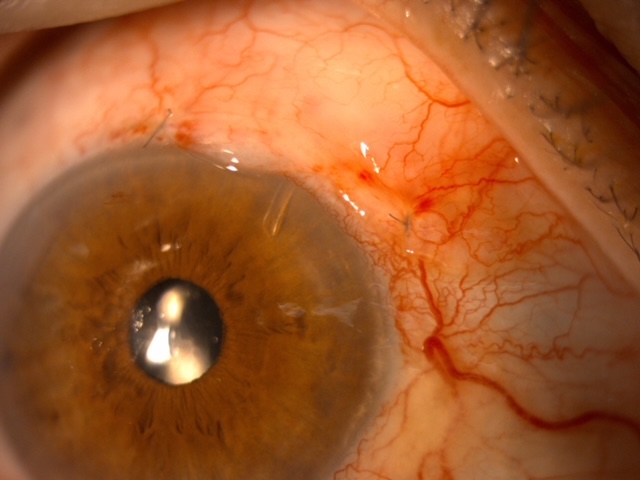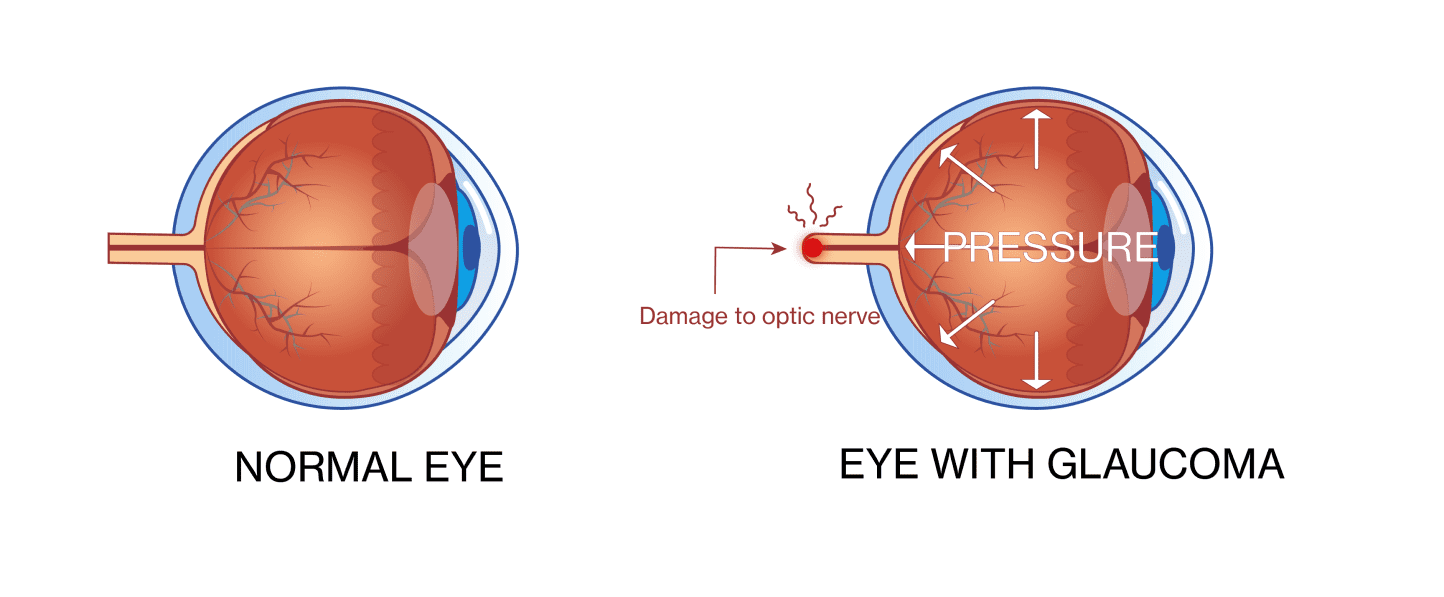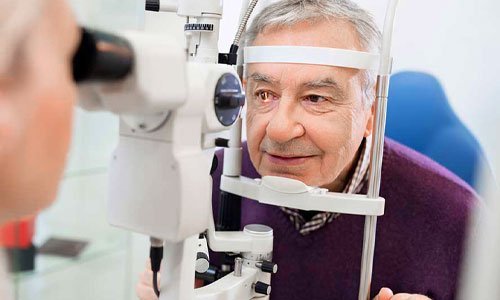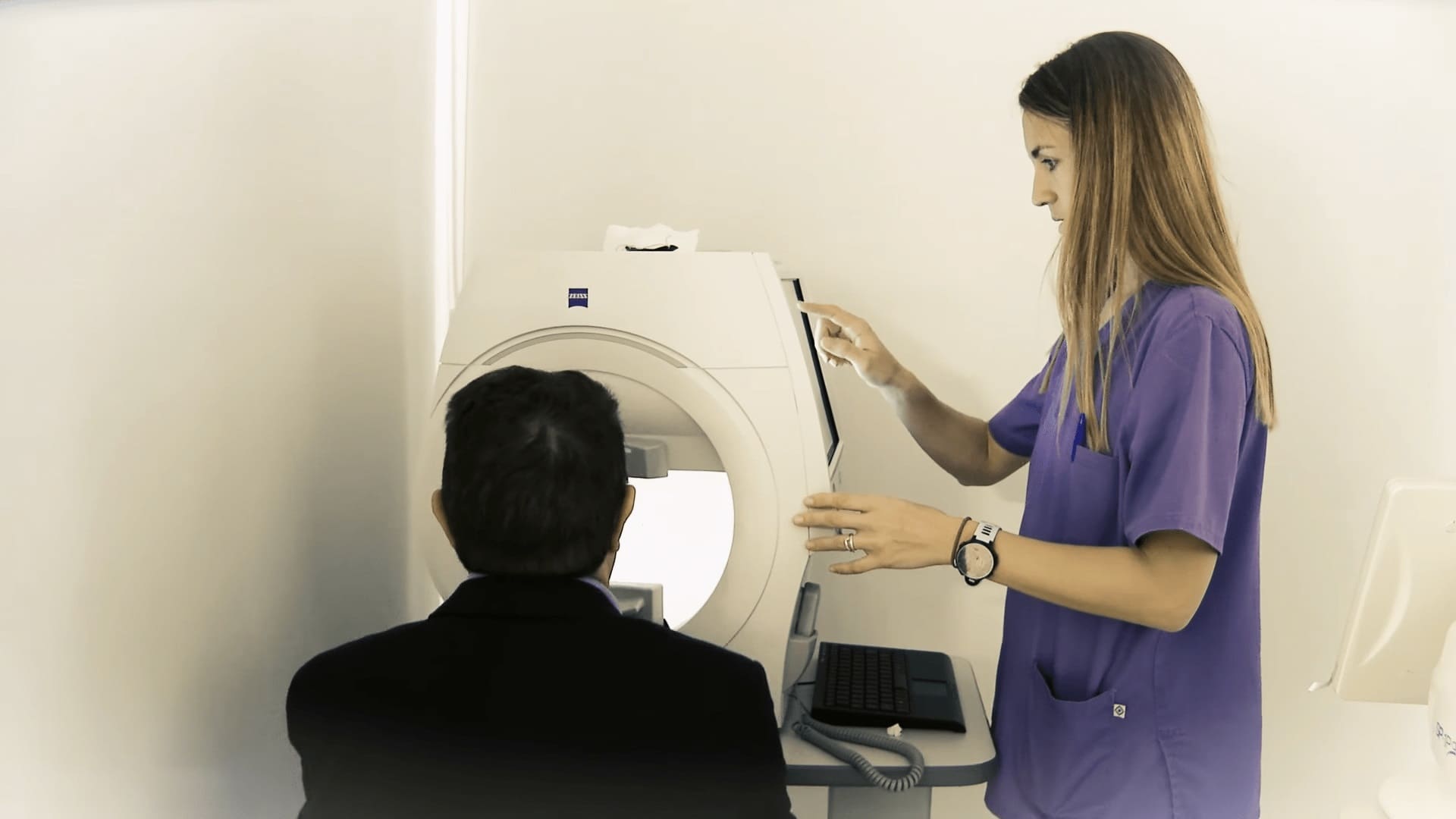Glaucoma / What is it?
Glaucoma: is it an eye disease?
The term glaucoma is used to describe a group of diseases that all involve chronic progressive optic neuropathy (a disease of the optic nerve). This causes characteristic changes to the functioning of the nerve and the nerve fibre layer, which transmits images from the retina to the brain.
These changes are associated with progressive and irreversible death of retinal ganglion cells (one of the innermost layers of the retina) and visual field loss. Intraocular pressure (IOP) is the most significant risk factor, but it is measurable and can be modified to reduce the likelihood of glaucoma progressing.

A common illness from the age of 40 onwards
Glaucoma affects 2-3% of people over the age of 40, although it is likely that up to 50% of cases remain undiagnosed. It is a significant problem throughout the world as it is the second leading cause of blindness worldwide. Primary open-angle glaucoma is the most common form in white, Hispanic/Latino and Black people, with a particularly high prevalence in the latter community. Primary angular closure (PDA) accounts for up to half of all cases worldwide, and is particularly prevalent in individuals of Asian descent.

Types of glaucoma
According to the age of onset glaucoma may be classified as congenital (children born with glaucoma), infantile, juvenile or adult.
Glaucoma may also be classified as either primary or secondary. Primary glaucoma is as a result of an intrinsic dysfunction in the eye, whereas secondary, or acquired, glaucoma is triggered by something.
Another way of classifying it is by angular width (i.e. the space between the iris and the cornea), and it may be an open or a closed angle, with primary open-angle glaucoma being the most prevalent in people of European and African descent.
It is a disease that affects men and women equally, where high levels of intraocular pressure (IOP) prevent the retinal nerve fibre layer (RNFL) from functioning properly, leading to characteristic changes such as thinning or loss of the optic nerve fibres (called "excavation"), which results in typical functional changes to the visual field.
The most common types of glaucoma are primary open-angle glaucoma, primary closed-angle glaucoma, normal tension glaucoma and congenital glaucoma.

Prevalence
Prevalence varies considerably between different ethnic-racial groups: the most affected are Asian people, whereas African and European people and their descendants are usually less affected. In 2013, it was estimated that 0.7% of people over 40 suffered from GPCA (primary closed-angle glaucoma) at a worldwide level, which amounts to 20.2 million people, the majority being Asian (15.5 million). As for the European population, a recent systematic review estimated that 0.4% of people over 40 suffer from GPCA, with three quarters being women. Prevalence increases with age, reaching almost 1% (0.94%) in patients over the age of 70. Considering the progressive ageing of the European population, we can predict that this prevalence will increase up to 9% in Europe over the coming ten years.
POAG (primary open-angle glaucoma) and PCAG (primary closed-angle glaucoma) are the two types of glaucoma with the highest prevalence worldwide (above secondary glaucoma, or SG), and have different aetiopathogeneses and even different risk factors.
It is also important to define ocular hypertension (OHT), which refers to the detection of an IOP above the normal range without clinical or functional and/or structural tests, a reproducible defect in the RNFL in the morphological study via optical coherence tomography (OCT), and/or a functional defect via a visual field analysis, which may suggest glaucoma.
Primary open-angle glaucoma
This is a disease of the optical nerve or a neuropathy that usually presents bilaterally and asymmetrically, is chronic and has a tendency to progress if the risk factors that triggered it are not treated. The loss of the neuroretinal fibre layer is usually irreversible, as is the corresponding visual loss. As a result, it leads to progressive loss of vision in untreated cases.
+ See more
Primary closed-angle glaucoma
Primary closed-angle glaucoma (POAG) is particularly common in Asian people, due to the characteristic morphology of their eyes.
+ See more
Normal tension or low tension glaucoma
This is a type of glaucoma that occurs when the IOP is within the normal range (under 21 mmHg), but there is still loss in the RNFL, leading to visual field loss.
+ See more
Congenital and/or infantile glaucoma
The term congenital glaucoma encompasses a range of different disorders, of which the majority are hereditary in origin. They are characterised by an ocular anomaly that has existed since birth and that causes an increase in intraocular pressure.
+ See more
Secondary glaucoma
This is a type of glaucoma that is triggered by another eye and/or systemic disease, medical treatment or injury, among other causes.
It is not connected to a primary eye disorder, such as:
Neovascular glaucoma caused by the formation of new vessels in the iris (secondary to uncontrolled diabetes/vascular obstruction).
Phacolytic glaucoma, caused by a long-standing cataract.
Ghost cell glaucoma caused by a vitreous haemorrhage.
Steroid glaucoma, in patients hyper-responsive to corticosteroids.
+ See more




